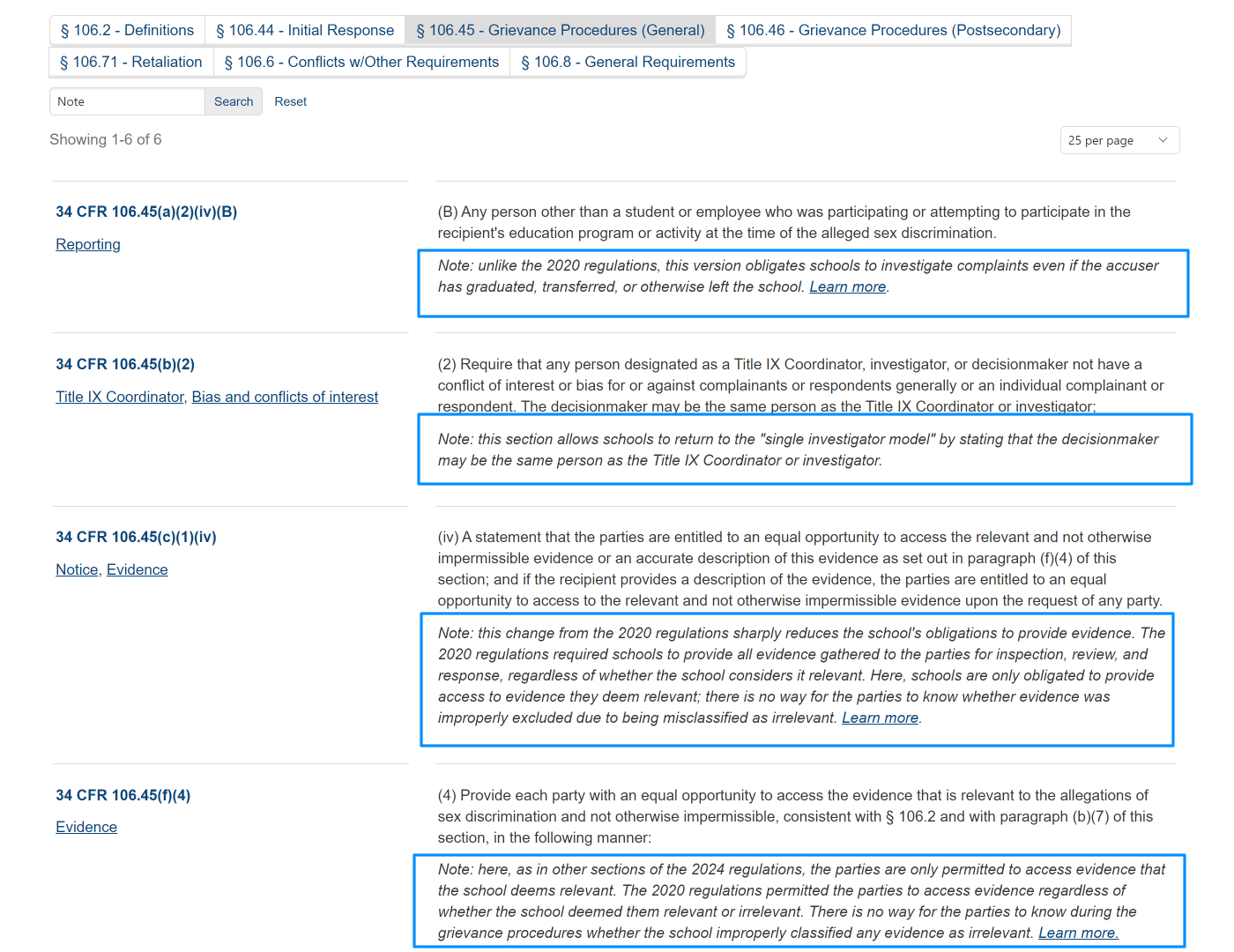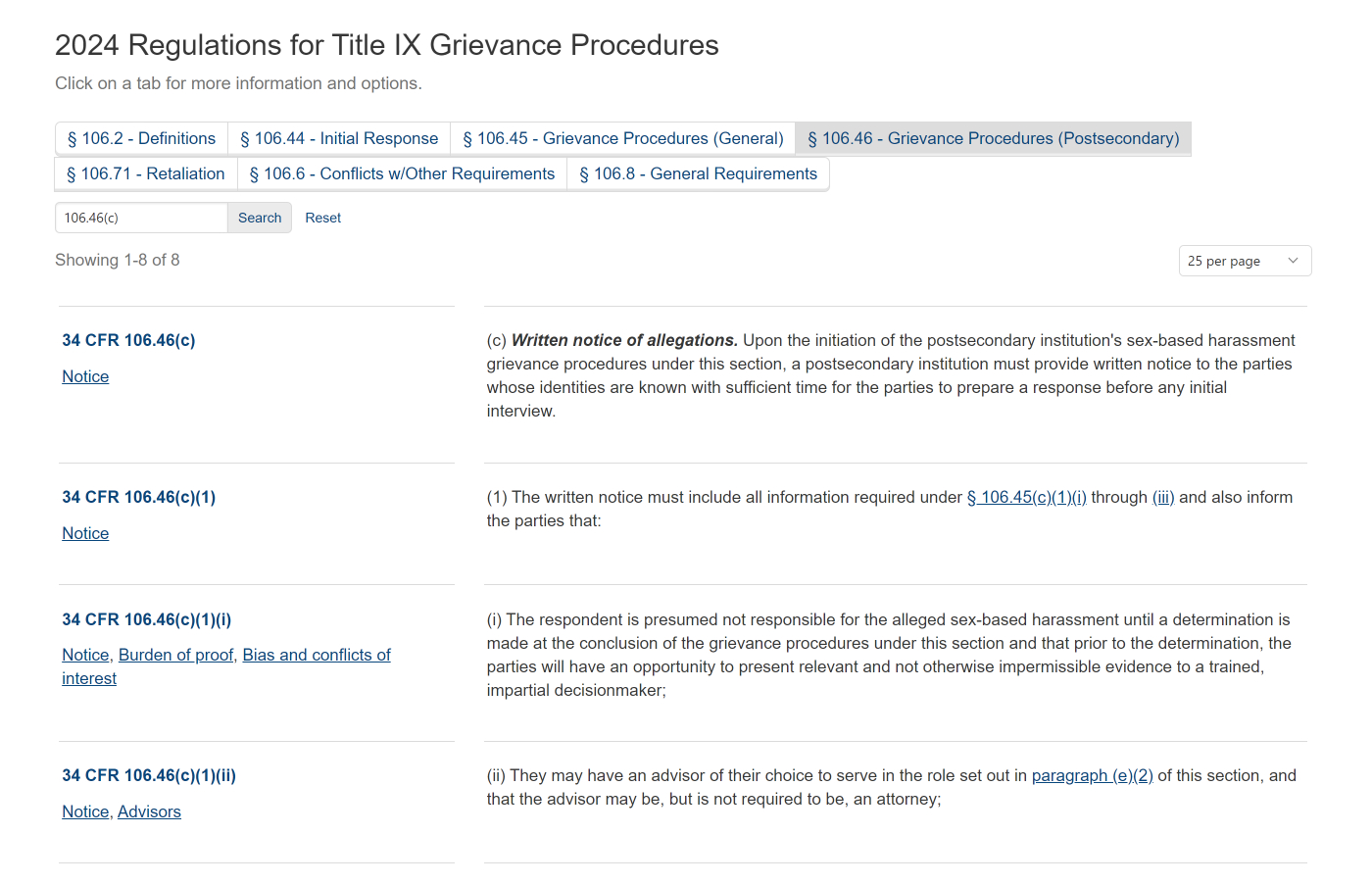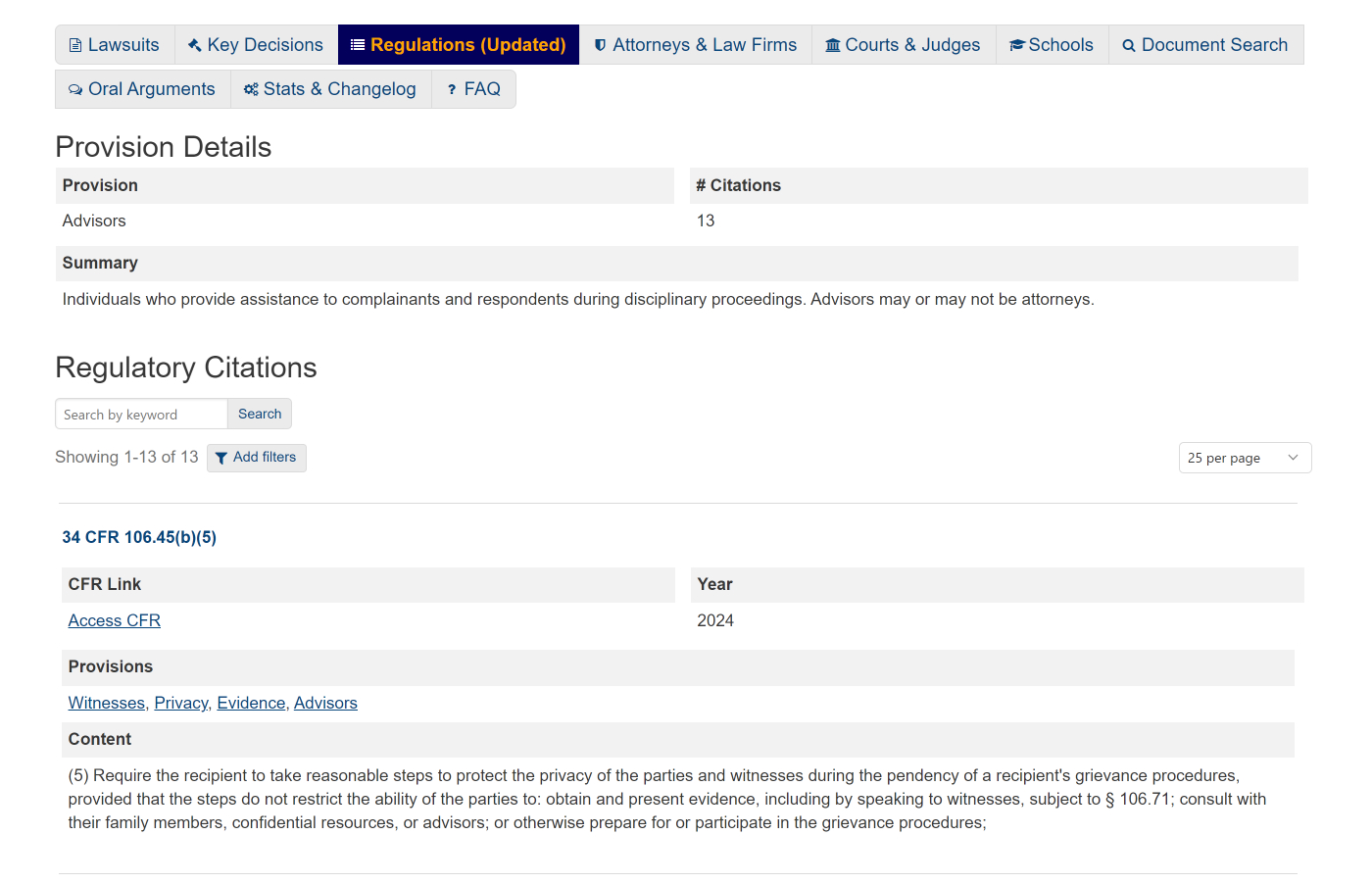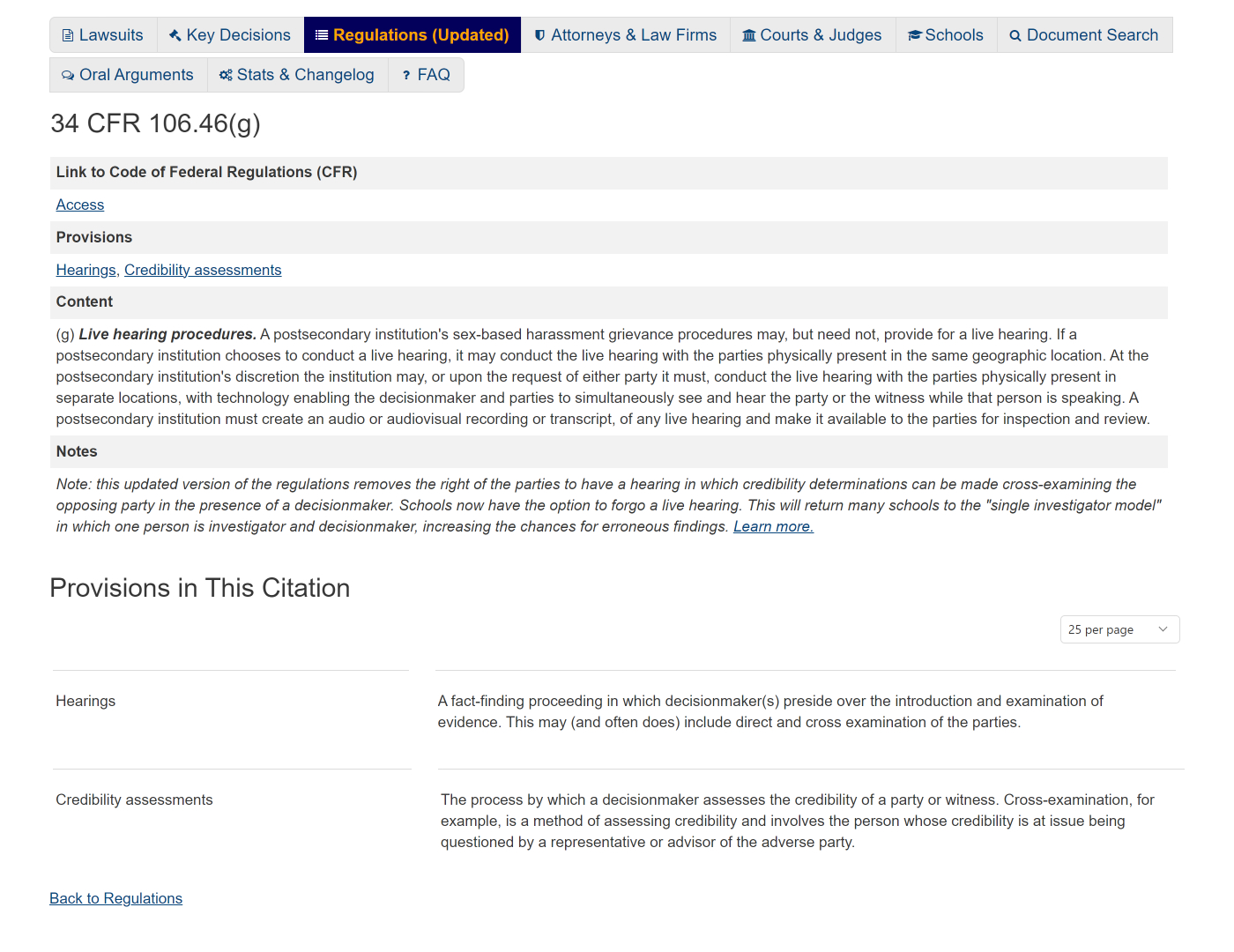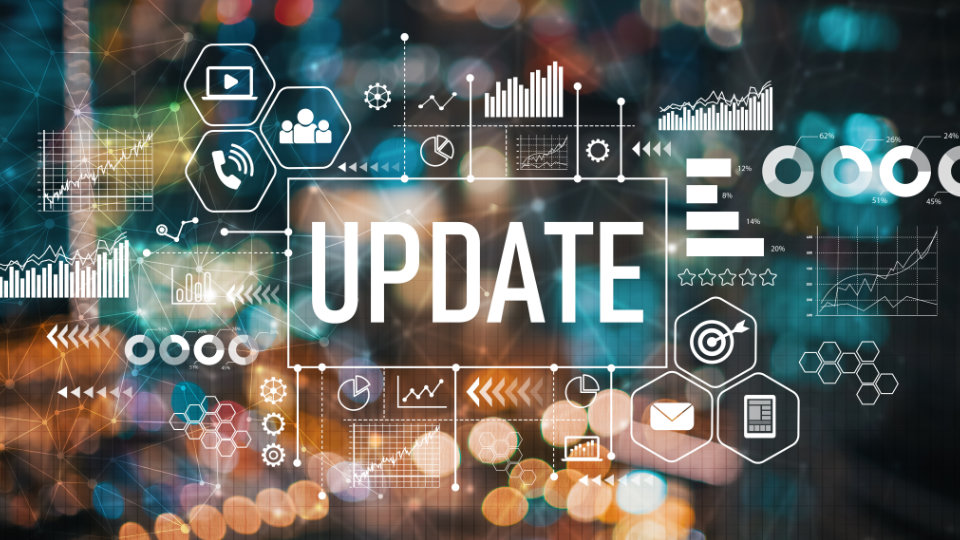The “Regulations” (previously titled “Provisions”) section of our Accused Students Database contains a citation-by-citation breakdown of regulations regarding Title IX grievance procedures. It also contains easy summaries of (and links to) provisions that tend to be instead diffused throughout various sections.
In the past few weeks, we have overhauled the structure of this section of the database and updated the data to reflect the new regulations governing Title IX grievance procedures. Our data on the 2020 regulations are still accessible (note that the new Biden Title IX regs are currently blocked in half the country). We’ll go over the changes below.
Notes Drawing Attention to Key Regulatory Changes
In April, we published a guide on what is changing for accused students in the 2024 Title IX regulations. Among other things, this guide addressed reduced access to evidence, the removal of obligations for postsecondary schools to provide live hearings, the expanded jurisdiction of Title IX investigations, and a broader, vaguer, and more subjective definition of sexual harassment.
Underneath the content of numerous citations, have included notes drawing attention to these changes and their implications. You can see examples of them in the image below (click the image to magnify):
New Tabbed Layout for Citations
Previously, all the citations were contained in one table which created some confusion. We have discarded this table format in favor of a new tabbed layout that should simplify navigation and lookup. For example (click the image below to magnify):
Note that the “provisions” labels on the left (“Notice,” “Burden of Proof,” etc.) are links. Clicking on them will take you to a “Provision Details” page listing every citation where that provision is addressed. Here is an example of a Provision Details page:
New “Citation Details” Page for Each Citation
Clicking on a citation on any page or section will take you to a new “Detail” page for that specific citation. These pages contain:
- The content of each citation
- A link to where the specific citation may be found in the Code of Federal Regulations
- Any notes on key changes regarding this citation and the implications for grievance procedures
- Summaries of and links to key provisions found in this citation
- Citation clusters (not pictured): citation clusters are found exclusively in Citation “Detail” pages. These clusters allow users to look at the citation in the context of closely-related citations.
We anticipate that Citation Details pages will primarily be useful when users find a citation on a “Provision Detail” page and wish to learn more about that specific citation.
Thank you for reading about our latest update. For more, please check out the Accused Students Database.
Thank You for Reading
If you like what you have read, feel free to sign up for our newsletter here:
About the Author
Related Posts
The “Regulations” (previously titled “Provisions”) section of our Accused Students Database contains a citation-by-citation breakdown of regulations regarding Title IX grievance procedures. It also contains easy summaries of (and links to) provisions that tend to be instead diffused throughout various sections.
In the past few weeks, we have overhauled the structure of this section of the database and updated the data to reflect the new regulations governing Title IX grievance procedures. Our data on the 2020 regulations are still accessible (note that the new Biden Title IX regs are currently blocked in half the country). We’ll go over the changes below.
Notes Drawing Attention to Key Regulatory Changes
In April, we published a guide on what is changing for accused students in the 2024 Title IX regulations. Among other things, this guide addressed reduced access to evidence, the removal of obligations for postsecondary schools to provide live hearings, the expanded jurisdiction of Title IX investigations, and a broader, vaguer, and more subjective definition of sexual harassment.
Underneath the content of numerous citations, have included notes drawing attention to these changes and their implications. You can see examples of them in the image below (click the image to magnify):
New Tabbed Layout for Citations
Previously, all the citations were contained in one table which created some confusion. We have discarded this table format in favor of a new tabbed layout that should simplify navigation and lookup. For example (click the image below to magnify):
Note that the “provisions” labels on the left (“Notice,” “Burden of Proof,” etc.) are links. Clicking on them will take you to a “Provision Details” page listing every citation where that provision is addressed. Here is an example of a Provision Details page:
New “Citation Details” Page for Each Citation
Clicking on a citation on any page or section will take you to a new “Detail” page for that specific citation. These pages contain:
- The content of each citation
- A link to where the specific citation may be found in the Code of Federal Regulations
- Any notes on key changes regarding this citation and the implications for grievance procedures
- Summaries of and links to key provisions found in this citation
- Citation clusters (not pictured): citation clusters are found exclusively in Citation “Detail” pages. These clusters allow users to look at the citation in the context of closely-related citations.
We anticipate that Citation Details pages will primarily be useful when users find a citation on a “Provision Detail” page and wish to learn more about that specific citation.
Thank you for reading about our latest update. For more, please check out the Accused Students Database.
Thank You for Reading
If you like what you have read, feel free to sign up for our newsletter here:
About the Author
Related Posts
More from Title IX for All
Accused Students Database
Research due process and similar lawsuits by students accused of Title IX violations (sexual assault, harassment, dating violence, stalking, etc.) in higher education.
OCR Resolutions Database
Research resolved Title IX investigations of K-12 and postsecondary institutions by the Department of Education’s Office for Civil Rights (OCR).
Attorneys Directory
A basic directory for looking up Title IX attorneys, most of whom have represented parties in litigation by accused students.


